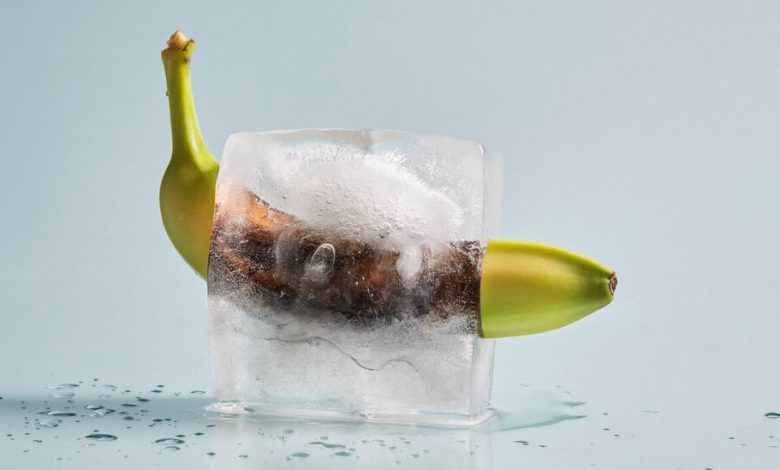Have Refrigerators Spoiled Everything?

FROSTBITE: How Refrigeration Changed Our Food, Our Planet, and Ourselves,byNicola Twilley
Consider the improbable fact of the supermarket banana. In “Frostbite,” an exploration of the vast system known as the cold chain, the journalist Nicola Twilley follows the banana through a “seamless network of thermal control.” This series of refrigerated trucks, rail cars, shipping containers and warehouses ends in the ripening room, with its temperature gauges and gas immersion baths, all to meet our demand for ripe tropical fruit in all seasons. “Produce is a labor of love,” a warehouse owner tells her. “I tell people that working here is like a face tattoo — you’ve got to be really sure you want it.”
Twilley is a food and health reporter who has studied cold and refrigeration for many years. Her engrossing book combines lucid history, science and a thoughtful consideration of how daily life today is both dependent on and deformed by this matrix of artificial cold.
In the 19th century, using ice to keep rail cars cold eliminated the scourge of urban slaughterhouses. With the gruesome spectacle pushed farther out of view, Americans began to eat a lot more meat. The national cattle population doubled and more land was dedicated to livestock in Texas and the Great Plains. Bison all but disappeared and most Native Americans were confined to reservations. By the 1880s, the bountiful prairie was largely plowed under. But we can now buy hamburger everywhere.
The home refrigerator is barely a century old. Twilley is shown how simple it is to build one, and then tells us just why it took so long to figure out. Early efforts were bent toward making ice with giant and dangerous machinery; breakthroughs in the use of vacuum pumps and compressors “cut out the middleman” of the ice itself.

The cold chain offers consumers endless abundance at the expense of flavor.Credit…Derek Brahney
The cold chain now stretches from the edge of the farmer’s field to your own kitchen. “Refrigeration has changed everything about how and what we eat,” she writes. “It has redesigned not only the contents of our plates but also our bodies, our homes, our cities, our landscape and the global atmosphere.”
